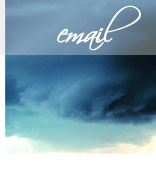

all website content © Marianna Jameson ~ all website design © Paula Roe
reprinting any part of this website without prior permission is strictly prohibited.

When Research Becomes Reality or The Other Crystal Meth by Marianna Jameson
This article first appeared as a post on the Novelists, Inc. (NINC) blog, July 28 2010
My first thriller, Category 7, written with Bill Evans, was about weather manipulation and featured a man-made hurricane being steered toward New York City. The proposal was sitting on our agent's desk, ready to go out to editors, when Hurricane Katrina hit New Orleans. It was an eerie, uncomfortable situation, but it was clearly a Mother Nature-induced coincidence so we waited a decent interval before sending out the proposal. When our second thriller, Frozen Fire, was released in hardcover last summer, we thought we were home free. After all, the eco-disaster in that novel is about something else we thought could never happen: a catastrophic release of methane gas bubbling up from the seafloor.
Sound familiar?
I was drop-jawed when I logged on to the Web one day this past May and found myself reading a news story describing how a deposit of crystalline methane-methane hydrate or "fire ice"-beneath the seafloor had been breached and was the probable cause of the explosion on the Deepwater Horizon oil-drilling platform in the Gulf of Mexico. The article explained how the methane ice had dissolved into a gas when it met water in the drilling tube, and the resulting bubble of gas began to rise. As the pressure lessened, the bubble rose faster, expanding as it did so. By the time it neared sea level, the force and momentum of this bubble of gas blasted the water in the tube 240 feet into the air-roughly the height of a 24-story building. The methane gas that followed the water out of the tube met an ignition source and blew up the rig, killing eleven workers and injuring many more.
The reason for my shock was that this scenario-minus the oil-is pretty much the story line of Frozen Fire, which is being released in paperback today. The book, a work of fiction (when it was written, anyway), is about a first-of-its-kind methane hydrate drilling operation in the Caribbean and the eco-terrorists who want to destroy it.
When I first discovered methane hydrate several years ago, I was overjoyed. More about that in a minute, but suffice it to say that I couldn't wait to use it as a plot device. I write eco-thrillers; I want readers to wonder what in my stories is real and what is not. I want them to wonder whether methane gas can bubble up from the seafloor, and what might happen if it does.
Wonder about it? Yes. Live through it? No.
As with the real situation in the Gulf, the problems facing the world in my novel are two-fold: what to do with the substance blasting out of the seafloor, and how to stop the leak before it causes more damage. Allow me to give a quick backgrounder here: Methane hydrate is methane gas that crystallized millions of years ago by natural forces (low temperature and high pressure) into "ice". It's an openly acknowledged hazard in the offshore oil drilling industry, which worked beautifully into the plot: the CEO of the company in our book chooses to ignore the high-impact/low-probability risk that a methane bubble could burst his profit bubble.
I was diabolically delighted to give our CEO, who is a very smart guy, such a huge blind spot, especially about something so obviously dangerous and potentially devastating and that the energy industry has been aware of for years.
Let me give you a little more background on methane hydrate and why I started to love it (in a Strangelovian way). It exists below the seafloor the world over, most abundantly along the continental shelves that ring the Americas. In fact, the U.S. Department of Energy estimates that the U.S. may possess more than one quarter of the world's supply of the stuff. Some of the more accessible deposits, or at least those that garner a lot of interest, are beneath the Arctic, the South Carolina coast, and the Gulf of Mexico.
Nations and companies worldwide are spending billions of dollars to develop the means to profitably extract this substance-which the industry likes to call the world's next, if not only, "clean" mined fuel-from its resting place. They call it "clean" because when it combusts, for instance, when it's burned as fuel, the only by-products are water and carbon dioxide (CO2). Yes, that CO2. Of greenhouse gas fame. But if it isn't burned-if, for instance, it leaks from a rupture in the seafloor as in my book or a blown-out oil well as in the Gulf - it remains methane, which is not only unbreathable, and highly explosive at certain concentrations, as we've seen in the Gulf, but it's also a greenhouse gas twenty times more destructive than CO2. Lighter than air, methane rises through the atmosphere and lingers there for eight years, at which point it becomes CO2 and hangs around for another 150 years.
When I learned that, I had to use it as a plot device. When methane hydrate sublimates-when it changes from a solid to a gas-the result is colorless; you can't see it. It's not a liquid, so it can't spill. This means a major release won't foul a coastline, ruin a beach, flatten a city, or make things glow in the dark; instead, the methane gas plume would rise silently and invisibly through the water column and then the atmosphere, killing anything in its path that needs oxygen to live - like dolphins, whales, fish, seabirds. And it would never go away. Not during our lifetime, anyway. With respect to the storyline I was developing, methane hydrate was the gift that would keep on giving, as the saying goes.
As a complete research geek, I was over-the-moon, doing-the-happy-dance thrilled to be able to use a real substance to create such an implausible but frightening scenario with unavoidable and irreversible consequences for my fictional world. As I started to write the book, I began to rather flippantly call methane hydrate "The Other Crystal Meth" because an accident-like the one that happens in Frozen Fire -would be as bad for the planet as doing methamphetamine is for your body. It was my little insider joke about a scenario I never dreamed would become a reality. Then the blowout in the Gulf happened and calling it "The Other Crystal Meth" didn't seem so clever anymore.
Unfortunately, the accident in the Gulf isn't the only creepy, foreshadowed moment in Frozen Fire's history. Just shy of two years ago, after the book was written and in production, I read that scientists had discovered that the seafloor off the coast of Siberia - and the methane hydrate beneath it - was warming, allowing the formation of natural methane "chimneys" that were releasing vaporized methane into the water column. As they shoot to the surface, the streams of gas bubbles turn the water to foam, then the gas rises into the atmosphere just as I describe-as fiction, totally made up or so I thought-in the book.
A few months later, I read an article in The Los Angeles Times featuring University of Alaska researcher Katey Walter, who is investigating the melting permafrost beneath Arctic lakes. The cause of that thaw is also a warming sea; the result is also the percolation of methane through the permafrost, and the release of methane gas into the water column and thence into the atmosphere. The article included a link to a video showing Ms. Walter igniting methane plumes on the surface of frozen Arctic lakes.
Then, this past May, I read about a methane bubble being responsible for killing nearly a dozen people and millions of marine creatures, damaging thousands of square miles of ocean, not to mention miles of coastline and wetlands, and endangering human health for what will no doubt be time measurable in decades, not unlike the threat scenario in my book. And I read about the various and occasionally wild ideas suggested to cap the well and contain the damage-the same ones my characters toss those around as possible means to solve the problem of the fictional methane leak. At the time I was writing the book, though, they were the most outlandish things I could conjure.
It's not an understatement to say that writing eco-thrillers has been an unusual odyssey. Here I thought I was just having some unruly, Armageddonish fun coming up with such extreme scenarios only to learn that the truth really is stranger - and scarier - than my fiction. Readers have asked me if I have a crystal ball (I don't), if I bet against the stock market (no), or if I'm going to stop writing these kinds of thrillers (absolutely not). And then they ask me - nervously - what my next book is about. All I can say to that is that I only finished writing it about six weeks ago, and they'll just have to wait until next summer to find out. Until then, they can wonder. And, maybe, worry. Just a little bit.







